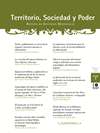Abstract
Resumen: Este trabajo tiene por objeto el estudio de los asentamientos monásticos prebenedictinos, entre los siglos vi y xi, en la tierra de L.lena, la zona montañosa central de Asturias, en la que hay una densa red de valles fluviales, así como una importante vía de comunicación que une el litoral marino astur con las tierras de la meseta castellana. Las fuentes, pese a su laconismo, permiten conocer aspectos de la evolución de los centros monacales en el más amplio contexto de la propia evolución de la sociedad de la zona.
Palabras clave: aristocracia, dominio, espacio, monacato, parientes.
Abstract: In principle, the main objetive of this work is the study of prebenedictine monastic settlements from the VI century to the XI century in the Lena district. In the mountainous area of the central section of Asturias, where there is a dense mesh of fluvial valleys in which there is an important route of communication between the coastal lands of Asturias and the Tableland, today called Castilian.
It is a geographical field of a dense area of castra settlements, propitiated by abundant cattle-raising, forest and mining resources; and, on the other hand, the possibility of agriculture and fishing offered by its valleys and rives. Moreover, the pass to the Tableland, known as La Carisa, is now an object of archaeological research which will produce very interesting results. Already in pre-Roman times allowed of interchanges increasing in Roman times, when the said route became a route for Romanization. Later, in Medieval times, relations between the area both in the central Asturian valleys and the León part can be observed.
All in all, in the Antiquity there are movements of assets and cultural interchanges and penetration of new ideas through La Carisa, Christianity included, since between the VI –VII centuries, when the Astur territory was part of the ecclesiastic province of Gallaecia, there are clear signs indications of monastic settlements; the monastery of St Peter and St Paul having outstanding artistic expression.
We know of other monasteries as the use of documents went on, they were situated near the rives, not in meadows but in adjacent hillocks, in such way that each monastic nucleus constituted not only a centre of pastoral labour, but also of the administration of a territorial domain rich in economic resources. The majority of these monasteries have an unknown origin, likewise we lack concrete information on the society in its transition from Antiquity to the Middle Ages, while it is quite possible to assume the existence of an aristocracy strengthened after his collaboration with Roma, and which, on the fall of the imperial power, would control the area and their passes. Monastic life took shape and developed into this social system at the cost of the property of de kinship families.
The fact is that by the X century, when reliable written documents can be counted on, we can still note the vestiges of the family kinship system within monasticism coexisting with the spiritual family, likewise the continuity in the expansion of the said monastic institution, which appears to enjoy independence and also the protection of royal and aristocratic power which continue to appear in documentary sources.
In the same way, already in the XI century, there can be clearly observed a consolidation of a dominating county family ample lands, among them that of Lena, also noting the passing of some monasteries under such domination.
Finally, the wide movement of reform that, in the XI century, affects western Christendom and that involves, among other aspects, the withdrawal of power that laymen held over churches and monasteries and, on the other hand, the new organization of monastic life, concentrated on large abbeys under St Benedict’s Rule, are elements that affect the studied area also. In the said process, that involves the strong feudalization of ecclesiastical structures, the prebenedictine monasticism of Lena reaches its twilight, because the noble laymen give up their rights over the monasteries to more important ecclesiastical institutions, so, without monastic life within their walls, the monasteries of Lena are reduced to rural parish churches, at the same time the territorial monastic domains go to increase the powerful dominions of whose centres of decision are removed from the area de Lena.
Keywords: aristocracy, domain, territory, monastic life, kinship

